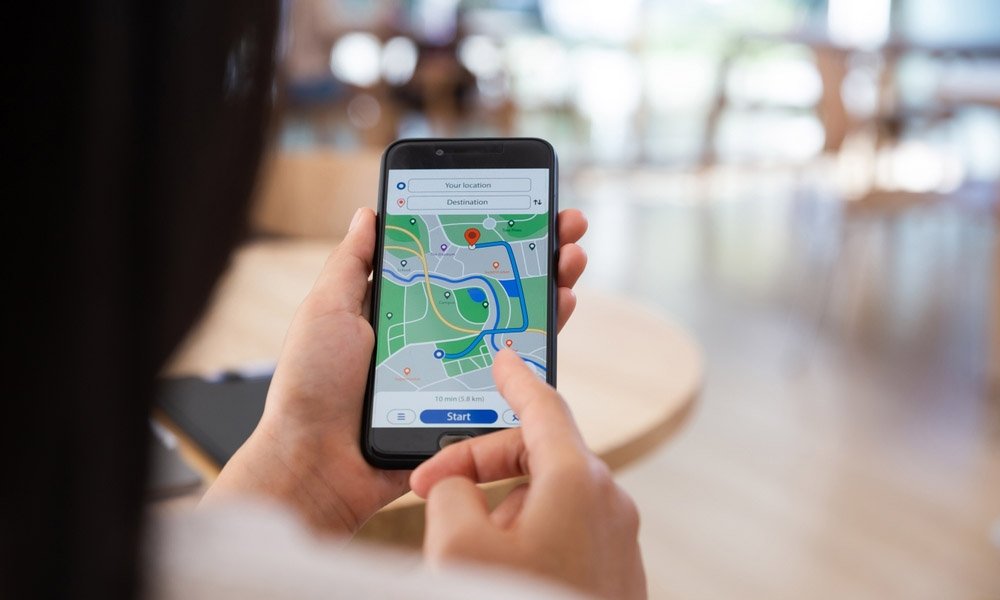Long-distance road transport can be exciting, but it also requires careful planning to ensure safety. Whether you’re driving a personal vehicle or transporting goods, following safety guidelines is crucial to avoid accidents and delays. In this article, we’ll discuss essential safety tips for long-distance road transport to help make your trip safer and more comfortable.

1. Prepare Your Vehicle Before the Trip
One of the most important steps in ensuring safe road transport is making sure your vehicle is in good condition. Before setting off, check the following:
- Tires: Make sure the tires are properly inflated and free of any visible damage. A flat tire or blowout can be dangerous, especially on long drives.
- Oil and Fluids: Check your oil levels and top off other fluids like brake fluid, coolant, and windshield wiper fluid.
- Brakes and Lights: Ensure the brake system and all lights (headlights, taillights, indicators) are functioning properly.
- Battery: Have your battery tested to avoid unexpected breakdowns.
By checking these items in advance, you can avoid unexpected issues that could cause delays or accidents during your trip.
2. Take Breaks and Rest Regularly
Driving for long hours can be tiring, which can lead to fatigue and impaired judgment. To stay alert and reduce the risk of accidents:
- Rest every 2-3 hours: Stop to stretch, use the restroom, and refresh yourself. A 10-minute break can help you feel more energized.
- Get plenty of sleep before your trip: Ensure you’re well-rested before starting a long drive.
- Rotate drivers: If you’re traveling with others, switch driving duties to prevent one person from becoming overly tired.
Rest is essential for maintaining focus and avoiding dangerous mistakes on the road.
3. Stay Hydrated and Eat Light
Staying hydrated and eating light meals during long trips is key to maintaining energy levels and concentration.
- Water: Drink water regularly to prevent dehydration, which can cause fatigue and dizziness.
- Healthy snacks: Pack snacks like fruits, nuts, or granola bars to keep your energy up without feeling sluggish.
- Avoid heavy meals: Large, greasy meals can make you feel sleepy or sluggish, so opt for lighter, balanced meals.
Proper hydration and nutrition will keep your body and mind sharp during the journey.
4. Follow Speed Limits and Traffic Laws
It’s important to obey traffic laws and adhere to speed limits, especially on long trips. Speeding can lead to accidents, and following the law helps ensure you’re not caught in a speed trap or facing fines.
- Speed limits: Stick to posted speed limits, even on highways where it might be tempting to drive faster.
- Check road signs: Pay attention to signs warning about sharp turns, steep grades, or construction zones.
- Traffic signals and lights: Always obey traffic signals, especially when entering unfamiliar intersections.
Respecting traffic rules reduces the risk of accidents and ensures a smoother trip.
5. Plan Your Route and Stay Updated
Before starting your journey, plan your route to avoid confusion or getting lost during your trip. Use a reliable GPS system or map app to navigate your journey. Also, stay updated on any road conditions:
- Road closures or construction: Check for any closures or construction along your route that could cause delays.
- Weather conditions: Ensure you’re aware of any severe weather forecasts, such as storms or fog, that could affect your drive.
- Alternate routes: Have a backup route in case of unexpected detours or traffic jams.
Knowing the route and potential challenges ahead will help you stay on track and avoid surprises.
6. Keep Emergency Kits Handy
Accidents or breakdowns can happen, so being prepared is crucial. Pack an emergency kit with essential items, including:
- First aid kit: Have bandages, antiseptics, and pain relievers in case of minor injuries.
- Flashlight and batteries: For use in case of a breakdown at night.
- Tire repair kit: Include a jack, spare tire, and tire repair tools.
- Roadside assistance contacts: Keep contact information for towing services or a roadside assistance program.
Having these items will help you stay calm and handle unexpected situations safely.
7. Drive Defensively
Defensive driving is about being aware of your surroundings and anticipating potential hazards. Follow these tips to drive safely:
- Keep a safe distance: Maintain enough space between your vehicle and the one ahead, so you have time to react if necessary.
- Use mirrors frequently: Check your mirrors often to stay aware of traffic behind you.
- Avoid distractions: Keep your phone out of reach, and focus solely on the road.
- Use turn signals: Always signal before changing lanes or turning to let other drivers know your intentions.
Defensive driving allows you to react quickly and safely in case of an unexpected situation.
8. Be Cautious in Poor Weather Conditions
Weather can significantly impact road conditions, making it more dangerous to drive. In case of poor weather, such as rain, snow, or fog:
- Slow down: Reduce your speed to maintain control of your vehicle on wet or slippery roads.
- Increase following distance: Give yourself more space between vehicles to allow for longer stopping distances.
- Use headlights: In low-visibility conditions like fog or heavy rain, always use your headlights for better visibility.
Drive cautiously in poor weather conditions to ensure your safety and that of other road users.
9. Stay Calm in Traffic or Delays
Long-distance driving often involves traffic or unexpected delays. Staying calm is essential to avoid frustration and unsafe driving behavior.
- Be patient: Understand that traffic jams are a part of driving, and rushing only increases the risk of accidents.
- Plan for extra time: Leave early to accommodate potential delays and avoid feeling rushed.
Remaining calm will help you stay focused and ensure that you drive safely, even when things don’t go as planned.
10. Use Proper Car Insurance
Ensure that you have proper car insurance for your long-distance trip. Check your policy to make sure it covers potential accidents, breakdowns, and other emergencies. If necessary, consider purchasing additional insurance for extra peace of mind.
Being adequately insured provides financial protection in case of unexpected events during your journey.
Conclusion
Safety tips for long-distance road transport are essential for ensuring a smooth and accident-free journey. By preparing your vehicle, taking regular breaks, following traffic laws, and staying calm in unexpected situations, you can ensure a safe and enjoyable trip. Whether you’re traveling for business or leisure, these safety tips will help protect you, your passengers, and your vehicle throughout the journey.











